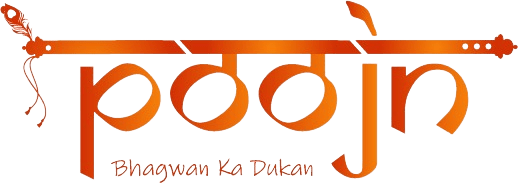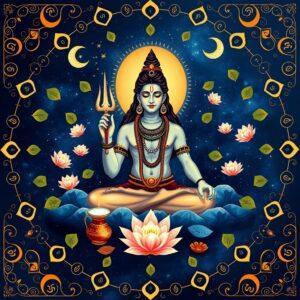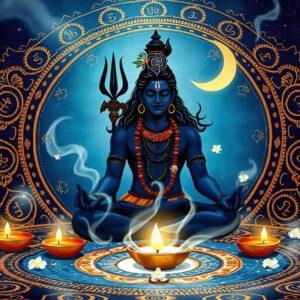Ram Navami is a cherished Hindu festival celebrating the birth of Lord Rama, the seventh avatar of Vishnu. This day marks the end of Chaitra Navratri, usually in March or April. Discover the significance and traditions of Ram Navami in Indian culture and its importance in promoting dharma and devotion.
Historical and Mythological Significance of Ram Navami
Ram Navami finds its origins in ancient Hindu texts like the Ramayana and Puranas, which narrate the life story of Lord Rama. His birth is seen as a divine intervention to restore righteousness and defeat the demon king Ravana. Ayodhya, Lord Rama’s birthplace, holds great importance as a pilgrimage site. Tulsidas’ Ramcharitmanas played a key role in popularizing Rama’s story in vernacular literature. Lord Rama symbolizes an ideal king, husband, and son, shaping the celebration of Ram Navami.
Rituals and Practices of Ram Navami Celebrations
Key rituals during Ram Navami include:
- Early morning prayers and recitation of the Ramayana: Devotees wake up early, bathe, and offer prayers to Lord Rama. Reciting verses from the Ramayana is a central part of the puja.
- Fasting (vrat), either full-day or partial: Many devotees observe a fast on Ram Navami as a mark of devotion and purification. Some may abstain from all food and drink, while others may consume only fruits and milk.
- Abhishekam (ceremonial bathing) of Lord Rama’s idol with milk, honey, and ghee: This ritual is performed to purify and honor the deity. It is believed to bring blessings and prosperity.
- Kirtans and bhajans (devotional songs) praising Lord Rama: Devotional songs and hymns are sung to express love and devotion to Lord Rama. These create a vibrant and spiritual atmosphere.
- Community feasts (prasadam) with traditional dishes: After the puja, devotees share prasadam, which is food offered to the deity. This promotes community bonding and sharing.
- Processions (Shobha Yatras) with decorated chariots depicting Ramayana scenes: Grand processions are taken out in many cities, showcasing scenes from the Ramayana. These are a visual spectacle and a public display of faith.
- Reading the Sundara Kanda, focusing on Hanuman’s devotion to Lord Rama: This chapter of the Ramayana emphasizes Hanuman’s unwavering devotion and is believed to bring good fortune.
You can find all the necessary items for these rituals, including a premium quality original cotton white markin cloth and red shalu cloth, at poojn.in.
Significance of Ram Navami Celebrations in Different Regions
Ram Navami is celebrated differently across India:
- Ayodhya: Ritual bathing in the Sarayu River and grand processions are the highlights of Ram Navami celebrations in Ayodhya, the birthplace of Lord Rama.
- South India: The celestial wedding of Rama and Sita (Kalyanotsavam) is enacted in temples, marking a grand celebration in South India.
- Maharashtra: Large community events and bhajan sessions are organized, bringing people together in devotion.
- Gujarat: Special pujas and Ramayana recitals are held in temples across Gujarat.
- Eastern India: Fasting and temple visits are common practices in Odisha and West Bengal.
- Nepal: Celebrations are held in Janakpur, believed to be Sita’s birthplace.
- Worldwide: The ISKCON movement has popularized Ram Navami among diaspora communities.
Traditional Foods and Special Recipes for Ram Navami
Traditional foods for Ram Navami include:
- Satvik food: Food without onion or garlic, prepared according to ritualistic norms. Common dishes are Panakam (a jaggery-based drink), Kosambari (a lentil salad), and Neer Mor (buttermilk).
- Sweets: Kheer (rice pudding), Puran Poli (sweet stuffed flatbread), and Sabudana Kheer (tapioca pudding) are common sweet dishes prepared for the festival.
- Regional Variations: Vada Paruppu (spiced lentil fritters) is a specialty in Tamil Nadu.
- Fruits and Dry Fruits: These are consumed for their symbolic purity and health benefits.
Decorating the Home and Puja Space for Ram Navami
Create a sacred atmosphere at home for Ram Navami celebrations:
- Use mango leaves (torans) and marigold flowers to adorn doors and windows: These decorations symbolize auspiciousness and prosperity.
- Set up an altar with idols or pictures of Lord Rama, Sita, Lakshmana, and Hanuman: This creates a focal point for prayers and offerings.
- Create a beautiful rangoli (decorative floor art) at the entrance, using natural colors: Rangoli adds to the festive atmosphere and welcomes positive energy.
- Use diyas (oil lamps) and incense to enhance the spiritual ambiance during the puja: The light and fragrance create a serene and devotional atmosphere. Consider purchasing premium diyas and incense from poojn.in for an enhanced spiritual experience.
- Incorporate traditional elements like banana leaves and tulsi (holy basil) in the decoration: These elements hold religious significance and add to the authenticity of the puja. You can conveniently order fresh tulsi and other puja essentials from poojn.in.
- Arrange puja items including the kalash (holy pot), conch shell, and bell: These items are essential for performing the puja rituals. Find high-quality brass Laddu Gopal murtis and other puja items at poojn.in to complete your setup.
Poojn.in has a wide variety of Bhagwa Namavalis perfect for Ram Navami.
Conclusion
Ram Navami is a beautiful celebration of Lord Rama’s birth, filled with rich traditions and deep cultural significance. By participating in the rituals, preparing traditional foods, and decorating your home, you can honor this sacred festival authentically. Whether you are in India or abroad, the convenience of online shopping makes it easy to find all the necessary puja items and decorations. Embrace the spirit of Ram Navami with devotion and joy, keeping the values of dharma and righteousness close to your heart. Wishing you and your family a blessed and joyous Ram Navami!
FAQs on Ram Navami Celebration
What is Ram Navami festival? Ram Navami is a Hindu festival that celebrates the birth of Lord Rama, the seventh incarnation of Lord Vishnu. It falls on the ninth day of the Chaitra month in the Hindu calendar.
How is Ram Navami celebrated? Ram Navami is celebrated with various rituals, including fasting, chanting of bhajans, and recitations of the Ramayana. Devotees visit temples, perform pujas, and sometimes enact plays depicting the life of Lord Rama.
Why is Ram Navami celebrated? Ram Navami is celebrated to honor the birth of Lord Rama, who is believed to have been born to restore Dharma and righteousness. It is a day to remember his virtues and teachings.
What are the traditional rituals performed during Ram Navami? Traditional rituals include offering prayers, singing devotional songs, reading the Ramayana, and performing aarti. Some people also observe a strict fast and avoid consuming grains and certain foods.
What is the significance of Ram Navami? The significance of Ram Navami lies in its association with Lord Rama, an embodiment of virtue, courage, and devotion. It is a day to seek his blessings and strive to follow his path of righteousness.
Can Ram Navami be celebrated at home? Yes, Ram Navami can be celebrated at home. Devotees can set up a small altar with images of Lord Rama, offer prayers, sing bhajans, and read the Ramayana. Fasting and preparing traditional sweets are also common practices.
Are there any special foods prepared during Ram Navami? Yes, special foods such as kheer, puri, and halwa are prepared during Ram Navami. These dishes are offered as prasad to Lord Rama and then distributed among family and friends.
Is Ram Navami a public holiday in India? Ram Navami is a public holiday in some states of India. The extent of celebrations and public recognition can vary depending on the region.


